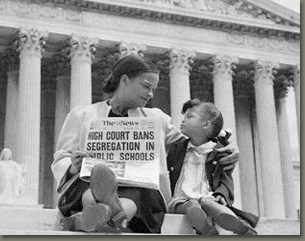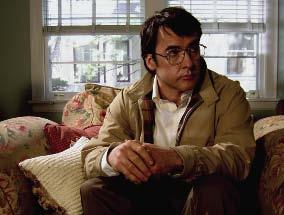 In business these days, children are a fact of life. Working from home to stay with a sick child is an allowable indulgence. If anyone remarks on a small voice in the office or in the background on a conference call, it’s most often to note it warmly. In 1973, when Roe v. Wade was being decided by the Supreme Court, children and business–and therefore women and business–never mixed. In order to get or keep a job, a woman could not get, or stay, pregnant.
In business these days, children are a fact of life. Working from home to stay with a sick child is an allowable indulgence. If anyone remarks on a small voice in the office or in the background on a conference call, it’s most often to note it warmly. In 1973, when Roe v. Wade was being decided by the Supreme Court, children and business–and therefore women and business–never mixed. In order to get or keep a job, a woman could not get, or stay, pregnant.
This isn’t an argument for or against the need for legal abortion in 2007. But it is one of the fascinating perspectives offered by PBS’s excellent two-part history of the Supreme Court, which debuts tomorrow night and Feb. 7th. The documentary does much to humanize the Court and the implications of its decisions for real people. It reports the standard Roe lore that Justice Harry Blackmun’s opinion was heavily influenced by Blackmun’s wife and four daughters, who assailed him with their pro-choice views at the dinner table. More than that, though, the show reminds us that the Court’s decisions can change our workaday lives so fundamentally that we forget why they seemed imperative at the time—leaving us to debate only abstract principles.
Not that the film trivializes the purpose or power of the court. The greater movements of history are also given their due: the civil-rights battles of the post-WWII era and the broad expansion of individual rights that followed, we learn, were the result of an opposition to totalitarianism that defined all American politics, including the Court’s, and redefined our values.
But the personalities and human foibles are what make these four hours of talking heads and decorous re-enactments compelling. Even Marbury v. Madison, the 1803 case that established the justices’ power to quash legislation, involved a political battle between two second cousins, Thomas Jefferson and Chief Justice John Marshall, and hinged on Marshall’s brother’s failure to deliver an important document to would-be justice-of-the-peace William Marbury. That kind of detail dissolves the mist of highflown principle and tradition that swirls around any institution like the Supreme Court. And that’s what good history does.


